Featured today — a belle bouillotte table and matching lamp!
Today, bouillotte tables are often used for a perfect side table, but they actually have a fascinating provenance to their aesthetic. I’ve really been wanting to feature this beautiful table of ours, but had been waiting to receive a matching bouillotte lamp to pair with it. Just last week our Houston Shop received one in our weekly new arrivals, and now I’m excited to finally be able to share the incredible story of the bouillotte table and lamp.
But first, tell me monsieur, what exactly is a Bouillotte Table?
A classic bouillotte table is round and typically desk height, making them perfect for seated activities, such as playing their namesake game, “bouillotte!”
One of their key defining features is the pierced brass or bronze rim surrounding a marble stone top, called a gallery. Additionally, a true bouillotte table should have two small slide-out planks and one or two small drawers.
Oftentimes we see small tables with only the brass gallery and stone top, and they are still correctly labeled “bouillotte tables,” but a true-to-function bouillotte table also has the mini shelves and drawers.
Why the table is named after a game
Bouillotte was a card gambling game of 3 to 5 players, and is considered an early version of poker. En vogue in the late 18th to early 19th centuries and especially enjoyed among the aristocracy, it is played with a piquet pack — a shortened deck of cards consisting of only suites 7 through 10, face cards, and aces. Put simply, these tables are named so because this is exactly what they were used for.
The slide-out planks were to put beverages (or a candle), and the drawers were to storage the card decks, chips and dice. The raised brass gallery rim is in fact so that when the die is cast (when playing other games) it wouldn’t fall off the sides of the table.
The matching bouillotte lamp
The lamp staged on our table is a signature bouillotte lamp, easily identified by its sliding metal shade. Before the advent of electricity, when the game was at its peak popularity during the Revolutionary and Napoleonic eras, these bouillotte lamps held candle sticks.
Since a cloth shade would catch fire from the flame of a taper candle, a period bouillotte shade is made from thin sheets of tinplate or steel, called tôle peinte (French for “painted sheet metal”). The interior of the shade is also polished to a reflective gold, helping the candles better illuminate the playing cards on the table.
Most unique about a bouillotte shade though is how it can slide up and down. This feature is so that as the candle burns lower, so can the shade be lowered, keeping the reflective interior close to the flame of the candle throughout the night.
The beauty of a matching table and lamp
It’s easy to visualize this classic table and lamp duo during the Parisian salon culture of pre- and post-Revolutionary France. Just imagine the aristocrats and bourgeoisie gathered around the bouillotte table, playing cards and enjoying wine in the reflected candlelight, late into the night.
You can bring home this ensemble of history today; we even have the matching vintage piquet pack of cards! Come experience the elegance of this aesthetic in person — stop by and take it all in. À bientôt!
Sign up to hear about upcoming events at all of our locations, from exclusive container first-looks to Saturday sip & shops.
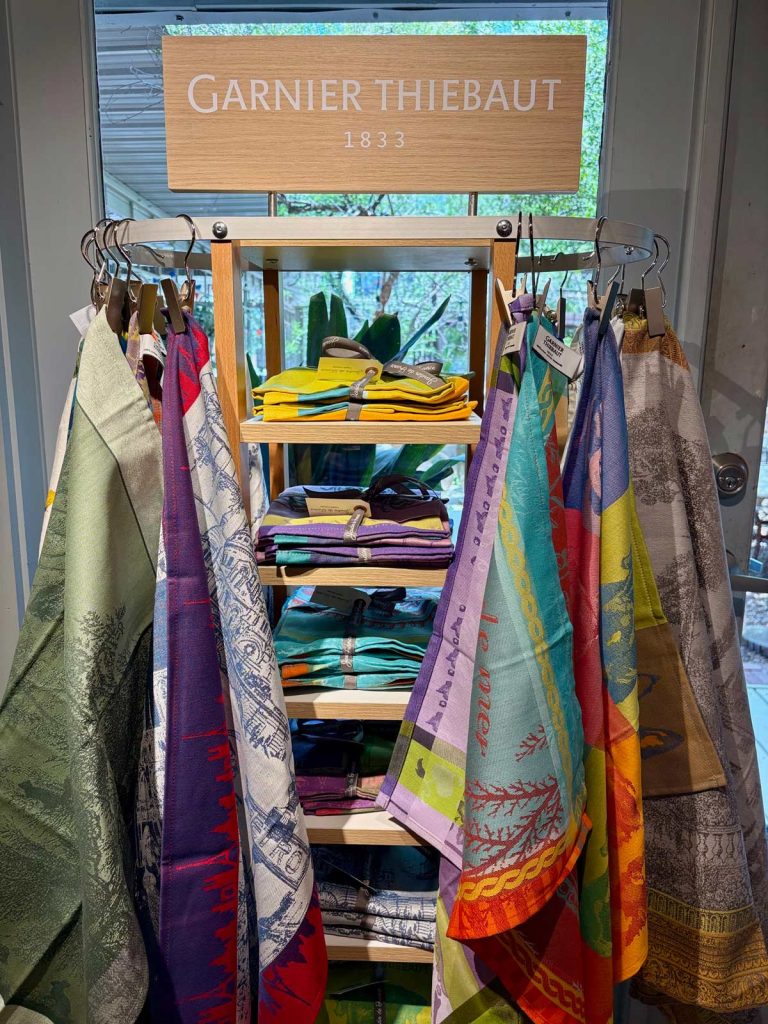

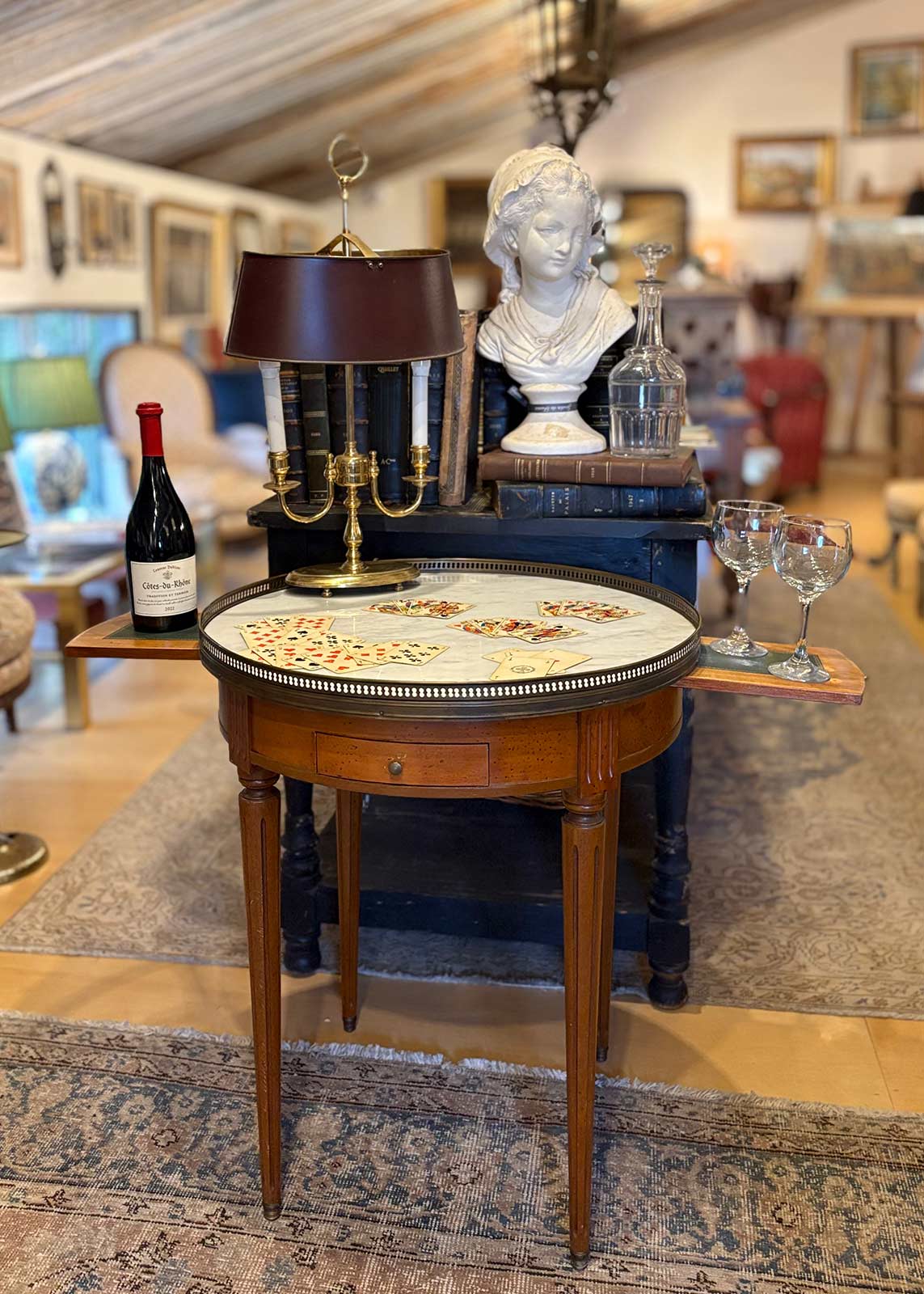

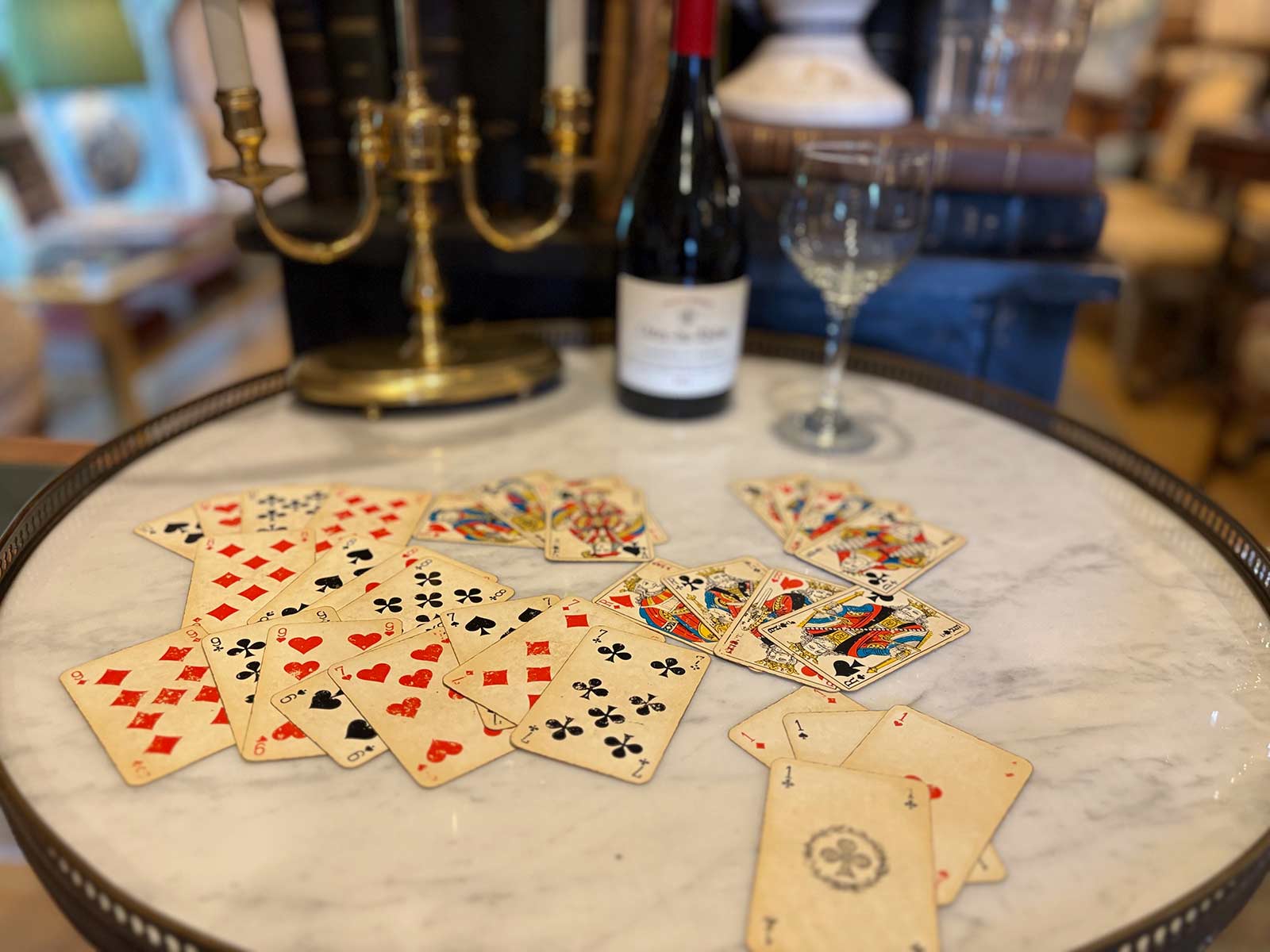
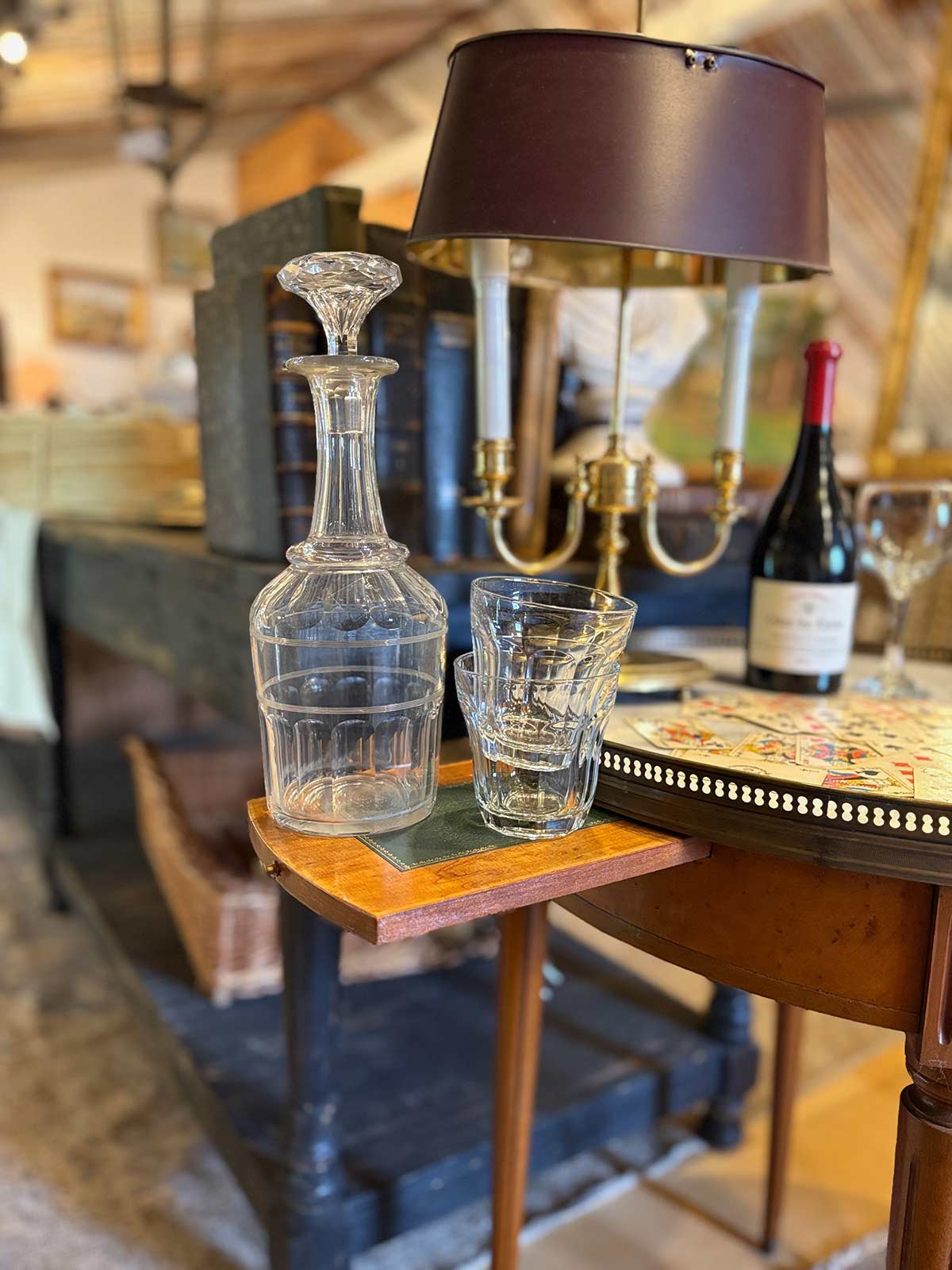


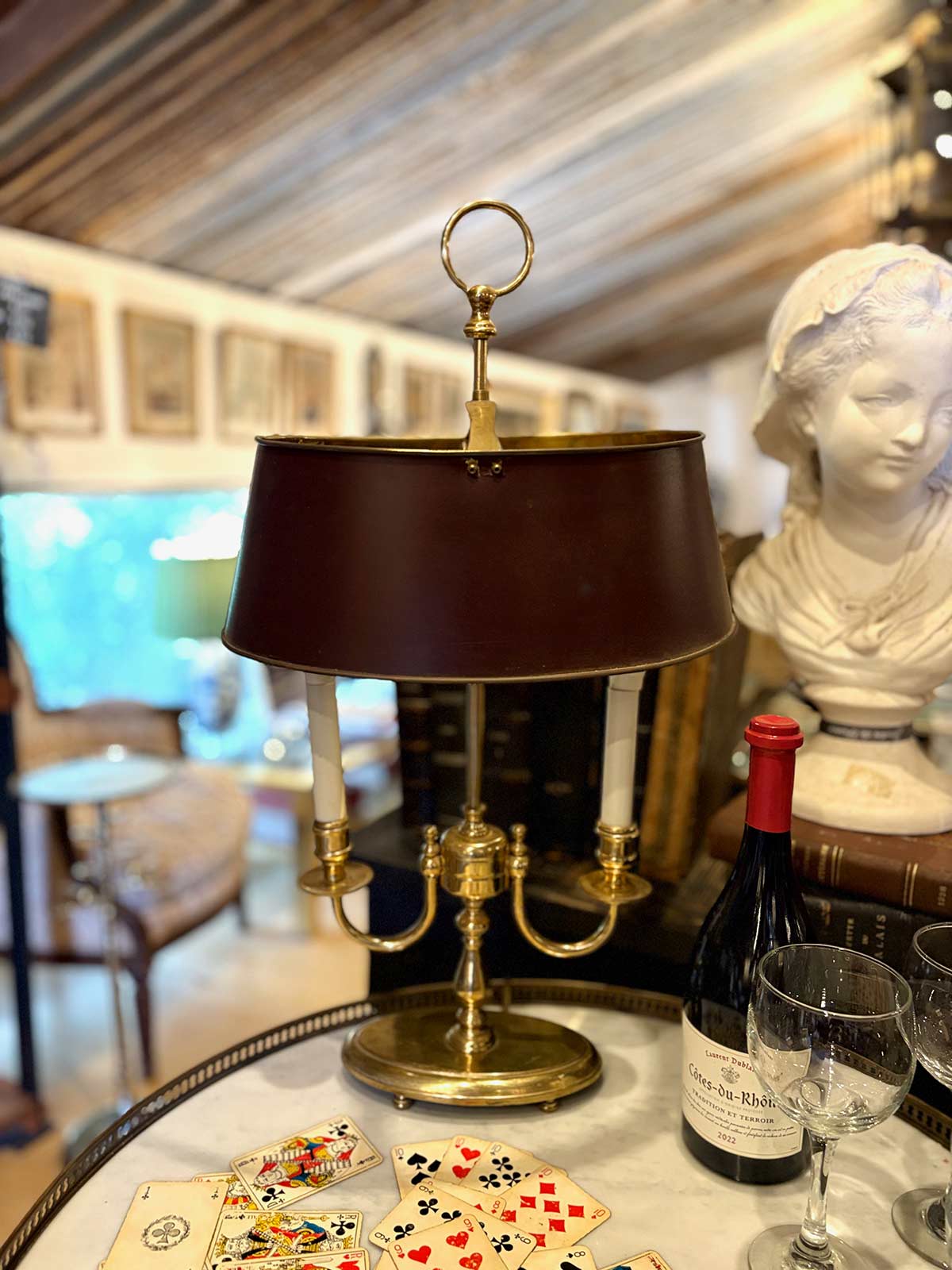
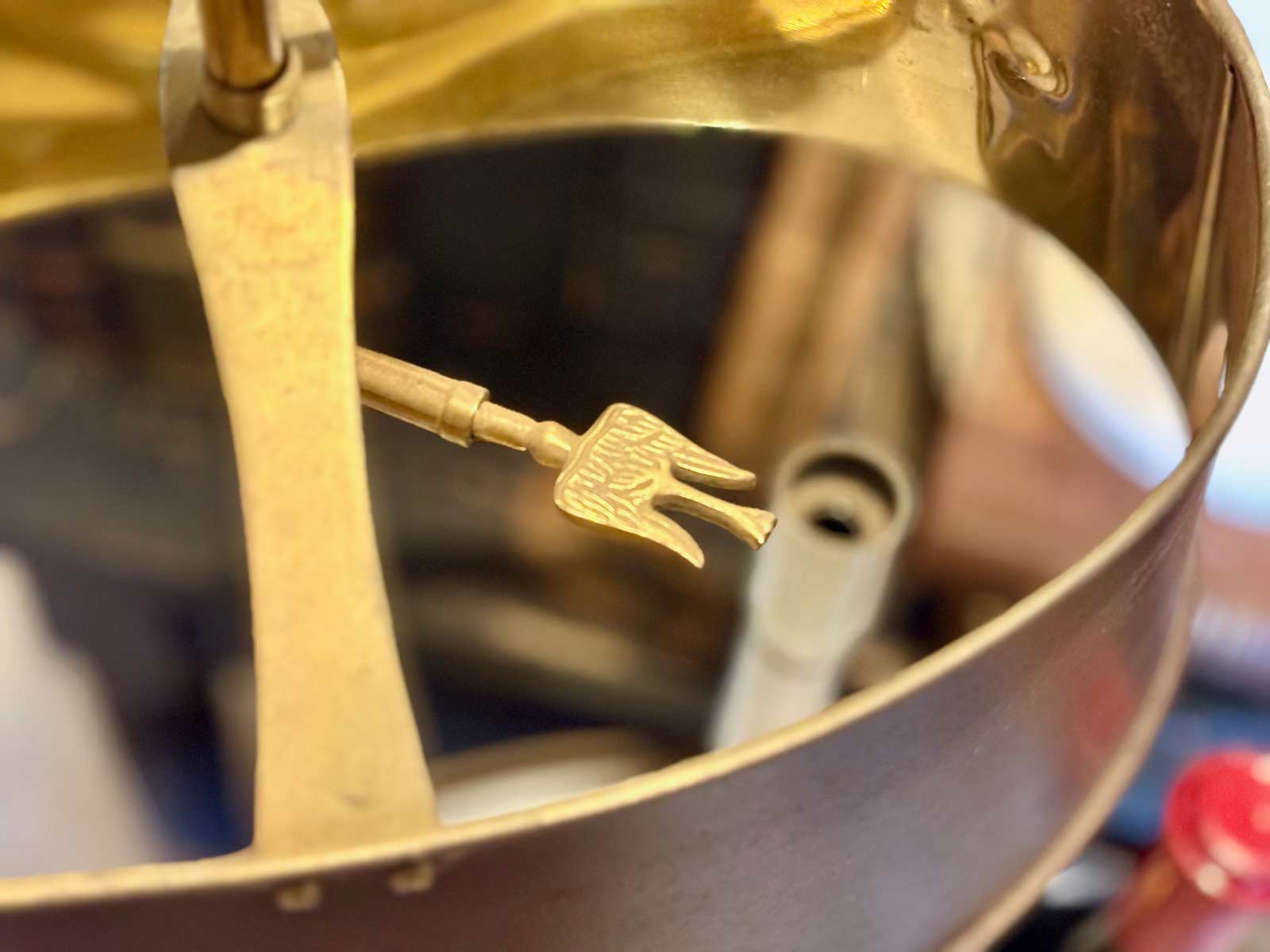
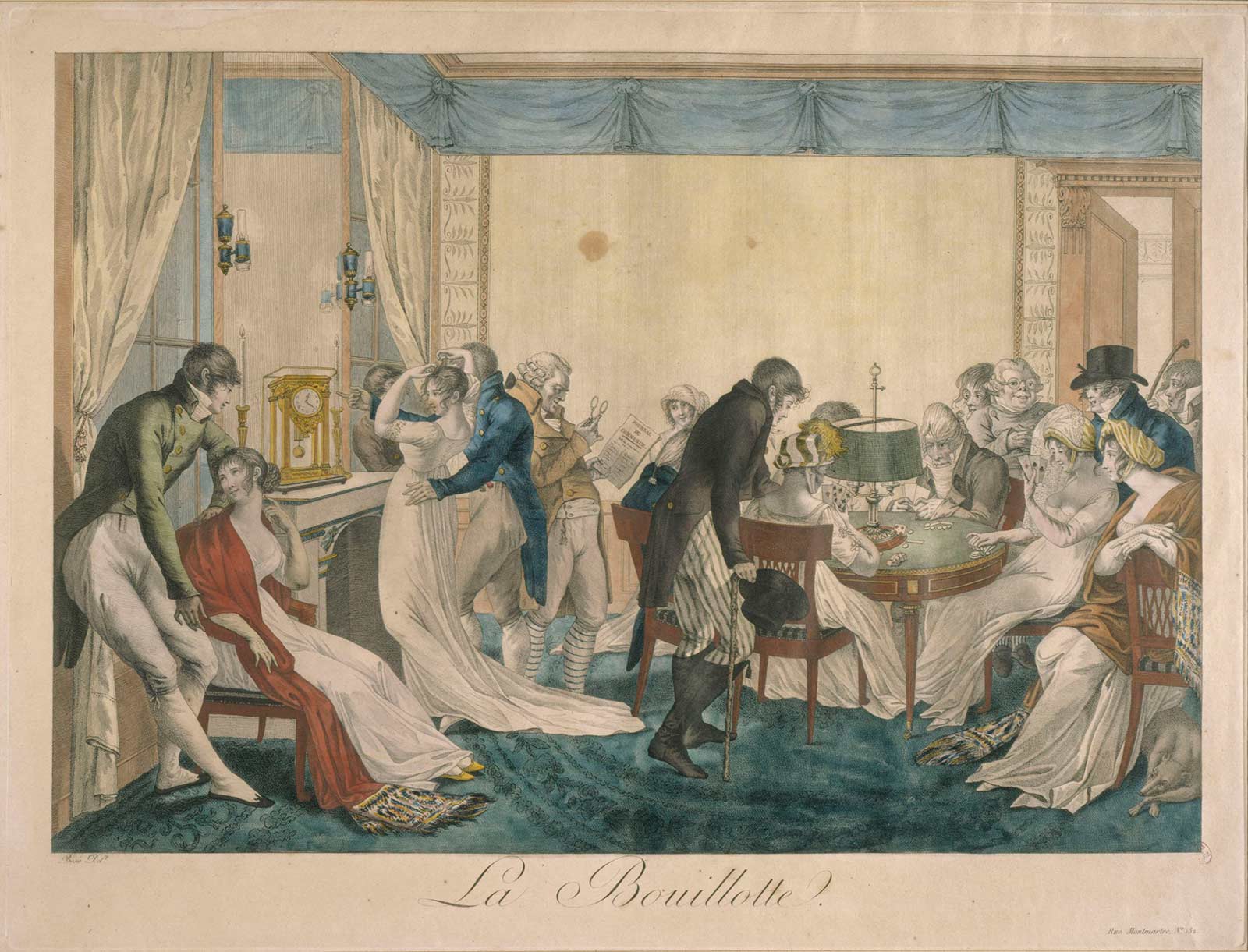

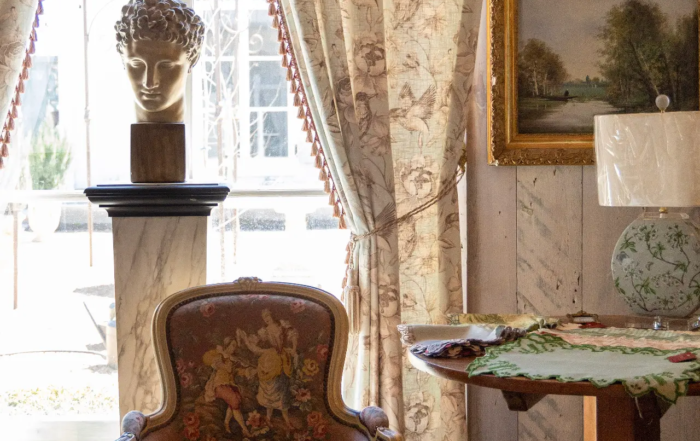



Are the side tables available to purchase
Yes ma’am this table is available for sale at our Houston Shop